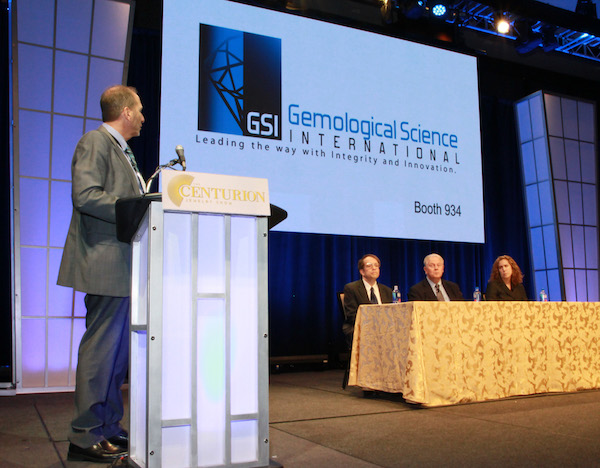Articles and News
The Year In Review: Synthetics, Tax Fairness, And New FTC Rules Make Jewelry News In 2018 | December 26, 2018 (0 comments)
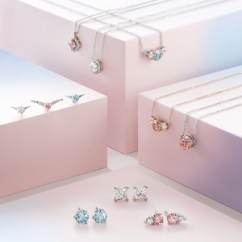
Merrick, NY—2018 was a solid year for the jewelry industry overall. Following a good holiday season last year, a strong economy and low unemployment combined to drive consumer sentiment up among all consumers, not just the luxury sector. Meanwhile, among luxury jewelers, the 2018 holiday season has been very strong, with a majority of weekly respondents to The Centurion’s Holiday Sales Success Index are reporting sales gains of 10% or more over last year’s already-strong figures.
But 2018 also had some big-news bombshells for the jewelry industry: synthetic diamonds, scandal, internet tax law, and new FTC guidelines that disallow the use of the word ‘natural’ to define a diamond.
Probably the biggest news in the industry centered around lab-grown diamonds, especially De Beers’ stunning announcement that it would launch a lab-grown diamond brand of its own. If you can’t beat ‘em, join ‘em and undercut ‘em—which is what De Beers did with its new Lightbox direct-to-consumer lab-grown diamond jewelry brand (above left). “For fun, not forever,” is the mantra of the brand, which features blue, pink, and white stones with transparent pricing of $800/carat. Not surprisingly, De Beers execs had some ‘splaining to do in front of a very hostile audience in Las Vegas. Read another exclusive Centurion interview with Lightbox execs here. The news was so earthshaking for jewelers that they almost missed Forevermark’s announcement that it too will launch a direct-to-consumer website.
Lab-grown diamonds were a hot topic all year, starting with the Centurion Scottsdale show in January (below), where a panel of industry experts explained why jewelers are worrying about the wrong things, such as being able to identify lab-grown stones.
GIA’s Dr. James Shigley reassured retailers that identification of manmade diamonds is not only possible but also relatively easy. “The good news is that synthetics have been studied for more than 30 years and a lot is known about identification and how they’re grown. Based on that research, we believe synthetic diamonds can be positively identified.” The biggest concern is around mixed parcels of melee: not that synthetics can’t be identified—they can—but they might not be because typically parcels are spot-checked, not every stone is graded.
Retailers in the audience—of which more than half already do offer lab-grown stones—urged their peers to make sure their staffs are trained, hold suppliers accountable for ensuring melee isn’t salted with synthetics, and to educate themselves about sustainability issues. Finally, if the industry needed any outside validation of the importance of the category, Victoria’s Secret 2018 Fantasy Bra Features Lab-Grown Diamonds.
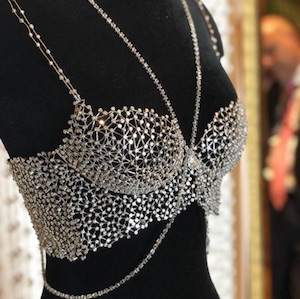
The mined diamond sector had its own share of news, both good and not so good. The good news is that the effort to drive demand is working: the Diamond Producers Association’s first year of revived generic diamond marketing showed solid results and will be getting more money.
While an increasing number of Millennials say they would consider a lab-grown stone for an engagement ring, new consumer research conducted by the DPA found that Millennials over-index for purchases of mined diamonds, 68% of consumers don’t consider a lab-grown diamond to be a “real” diamond, and that Millennials are more likely to buy diamonds and diamond jewelry than any other age group. Millennials and Gen-Z now drive 2/3 of global diamond demand, says De Beers.
So what do Millennials really want? In a word, choice. They care tremendously about ethical sourcing, authenticity, and being able to afford what they want.
Seven in 10 jewelers DPA spoke to reported an increase in diamond self-purchase over the past two years. After talking to hundreds of associates working in national and regional chains and independent jewelers; DPA feels there’s tremendous opportunity in this market, especially women over age 35. De Beers augmented DPA’s finding with its own study showing the bridal market is in decline but other diamond-gifting occasions are on the rise. Finally, if consumers want natural pink stones, they’d better buy them soon: the Argyle mine, the premier source of pinks, is almost tapped out.
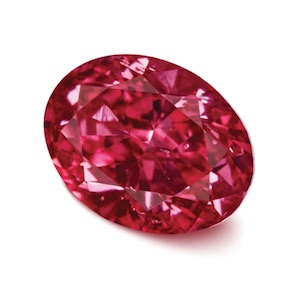
Legislation: the good, the bad, and the expensive. Two major pieces of legislation impacted the jewelry industry in 2018: the first major overhaul of the FTC’s Guides for the Jewelry, Precious Metals, and Pewter Industries (aka “Guides”) in more than two decades, and the online tax fairness ruling, something jewelers have been fighting for since 1992.
While jewelers nationwide cheered the tax fairness ruling, the FTC Guides revision got as many jeers as cheers. A few small but significant shifts had some industry professionals up in arms: the word “natural” has been removed from the definition of diamond.
While some consider it a victory for scientific accuracy, it is a blow to the natural diamond industry. The old FTC definition was, “A diamond is a natural mineral consisting essentially of pure carbon crystallized in the isometric system.” The new definition is, “A diamond is a mineral consisting...” without the word natural.
Sara Yood, JVC senior counsel, says ample protections remain in the revised law to prevent diamond growers from marketing their products as natural.
“As [the FTC] explain it, there are now other processes in which a diamond can be made, and therefore, having the word ‘natural’ in the definition no longer made sense as they want all the diamond provisions to apply to all kinds of diamonds, whether natural or lab-grown.”
Lab-grown diamond marketers got more of what they want in the words "cultured" and "synthetic," which most of the rest of the industry doesn’t want. Growers argued that consumers equate "synthetic" with "simulated," confusing diamonds with moissanite or CZ. The FTC took "synthetic" off the list but did rule that jewelers can’t imply a lab-grown diamond is not a real diamond. “Cultured,” another sticking-point word, now can be used but still must have a clear and prominent qualifier like "lab-grown" or "–created." And manufactured or artificially-produced products still can’t be called real, genuine, natural, etc.
Finally, one more important ruling was lost in the shuffle of the big announcements about tax fairness and the FTC guides: swipe fees. When customers use a credit card, the retailer is charged a small percentage of the sale for the privilege of being part of the credit card network. For a luxury retailer making a five-digit sale, those fees are significant. The SCOTUS ruling prevents retailers from incentivizing, or even suggesting, a consumer use a lower-fee card.
Money and murder. An enormous scandal in India’s diamond sector impacted some American-based diamond companies, most notably the respected A. Jaffe brand, which filed for Chapter 11 bankruptcy in February. Although A. Jaffe itself was not involved in any wrongdoing, nor were affiliated brands Sandberg & Sikorski, Firestar Diamond, Firestone or Next Diamond, the firms’ owner, Nirav Modi, and his uncle, Mehul Choksi of the behemoth Gitanjali Group, were charged with criminal conspiracy and cheating Punjab National Bank out of potentially billions of dollars, and the scandal may also include widespread synthetic diamond fraud in Surat.
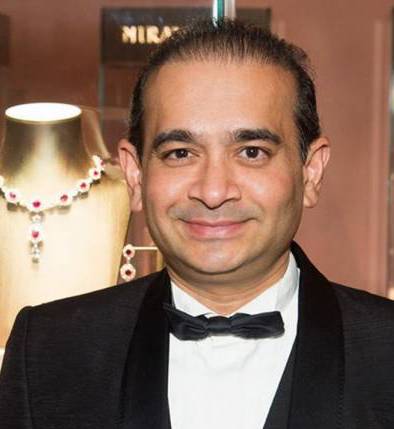
Nirav Modi
The A. Jaffe brand later was bought by Paramount Jewels LLC of New York, whose owner Parag Jain plans to retain its current employees and chairman Sam Sandberg, and invest in marketing initiatives to elevate the A. Jaffe brand as a separate division.
Another scandal was steeped in sadness: the murder of beloved AGS jeweler Ted Shaughnessy, owner of Gallerie Jewelers in Austin, TX. Initial reports said Shaughnessy was killed in a home invasion, setting jewelers nationwide on edge. Shaughnessy’s death later proved not to be a random invasion, but a murder-for-hire, with Shaughnessy’s son and daughter-in-law arrested as prime suspects. Money is believed to be their motive.

The late Ted Shaughnessy, a beloved AGS jeweler, was killed in a home invasion. His son later was arrested as a prime suspect.
Movers, shakers, and departures. 2018 saw some exciting launches, promotions, moves, and closings. Lisa Bridge rocketed from her newly-assumed post of president and COO of the Ben Bridge chain last year to president and CEO this year. She takes over the CEO post February 1, both the firm’s youngest CEO and its first female. Read Bridge’s exclusive-to-Centurion thoughts on the future of the industry here.
The Cultured Pearl Association of America tapped journalist and pearl lover Jennifer Heebner as part-time executive director; event and tradeshow executive Mindy Fielman joined Centurion and H2 Events as ongoing project manager, and the company also launched JewelryEcomm.com, an expansive new free website aimed to help educate and train the fine jewelry industry on all aspects of e-commerce and digital marketing.
Although the rapid-fire rate of retail closings has moderated somewhat, some longtime luxury jewelers are closing doors forever. Kevin and Kathi Main are retiring and closing their San Luis Obispo, CA-based business by year’s end. The jewelers, who weathered both an earthquake and the 2008 recession, want to go out on top while business is good. But Texas-based Green Bull Fine Jewellery Couture, once one of InStore magazine’s “Coolest Stores,” closed due to declining sales. Famed San Francisco specialty store Gump’s declared bankruptcy, but still hopes to find a buyer. Finally, the 120-store Samuels chain, another casualty of the Nirav Modi/Gitanjali mess, also filed bankruptcy.
Meanwhile, things appear to be looking up somewhat for two beleaguered retailers, Tiffany and Sterling, but not so much for Danish bead brand Pandora. Finally, after being soundly bashed by the trade, the Baselworld trade fair got flipped on its head after the Swatch Group had enough of its intractable management policies and exited the fair. Among other changes, both the managing director and CEO stepped down, and Baselworld and rival SIHH—which has had its own issues—will return to consecutive timing next year.

2081 has been a tough year for the Baselworld fair.
Takes a flushing, keeps on working. In the world of weird, a Rolex watch reappeared 18 months after it was accidentally flushed down the toilet. Some sewer workers in Chino, CA, found it and returned it to its rightful owner. It was filthy but still working and had only lost one of the diamonds on its bezel.
An online challenge to clean and declutter led one woman to find two bags of loose diamonds in her home. She and her husband deal in diamonds as a side gig (no idea what their regular gig is) and she found the two parcels in a basket on her kitchen counter.
The newest diamond engagement trend is off the charts on icky: skip the setting and embed the diamond in your skin. Eeew. It makes presenting an engagement ring inside an avocado seem positively normal.
Retailer news: clever events, honors, and philanthropy:
- Philadelphia Jeweler Gives Fans A Chance To Touch Superbowl Trophy
- Tonya Marthaler’s Native American Heritage Sparks Her Quest To Help
- Wish Book Gets Brilliant Results In a Trice!
- Jeweler Ann Marie Dunn Of J.R. Dunn Honored For Support Of Women
- Borsheims Profiled on ‘Diamonds Do Good’ Website
- Jeweler Turns Former Firehouse Into Chic Retail Space
- Queen Elizabeth Wears Tiny Jewel Box Brooch
- Smyth Jewelers Helps Customer Plan The Perfect Creative Surprise Proposal
- Retailer Cathy Eastham Honored
Other 2018 news of note:
- #JewelryToo: Progress, But Harassment Is Real And Women Lag In Leadership Roles
- Millennial Spending Set To Rocket: They Love Secondhand Goods and Entry Luxury Brands
- #YouToo? Unconscious Bias Can Drive Down Your Bottom Line
- Blockchain: Coming Soon To A Store Near You
- Will Cryptocurrency Be A Financial Savior Or A Ryp-Off?
- The Biggest Crime Threat To Jewelers
- The U.S. Jewelry Market Is Much Smaller Than You Think
- Shocking Sales Statistics: Your ‘Loyal’ Customers Aren’t That Loyal!
A final farewell. The industry bid a sad farewell to some legendary names this year: jewelry designer Cornelis Hollander, whose sculptural designs spawned many imitators; Doug Schubot, former chairman of Troy, MI-based Jules R. Schubot; two legends from the Ben Bridge chain, respected industry leader Admiral Herb Bridge and renowned training expert Orley Solomon, whose programs for Ben Bridge became a model for the industry; Philadelphia retail jeweler and TV personality Gerald M. Robbins; Theodore Shaughnessy, the murdered Texas jeweler; James Avery, whose eponymous chain of 80 vertically-integrated stores is one of the top 20 specialty jewelers in the United States; Judith Lieber, designer of the bejeweled minaudières carried by socialites everywhere; trendsetting merchant and luxury jewelry visionary Carolyn Kelly; journalist and photographer Steffan Aletti; Ira Kinsler, former publisher of National Jeweler; Helen Buck, longtime employee of the Jewelers Security Alliance; Morris Adwar of ALA Castings, and two renowned antique and estate jewelry experts, Joseph H. Samuel Jr. of J. and S.S. DeYoung, and Camilla Dietz Bergeron. See more remembrances here.

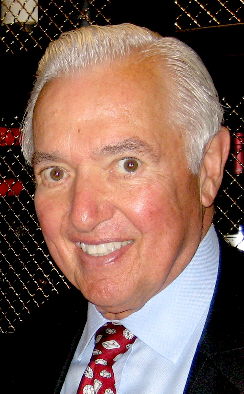


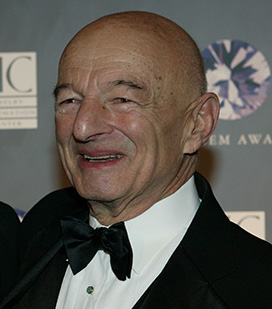

Clockwise from top left: Cornelis Hollander, Doug Schubot, Jerry Robbins, Orley Solomon, Herb Bridge, and Carolyn Kelly.








